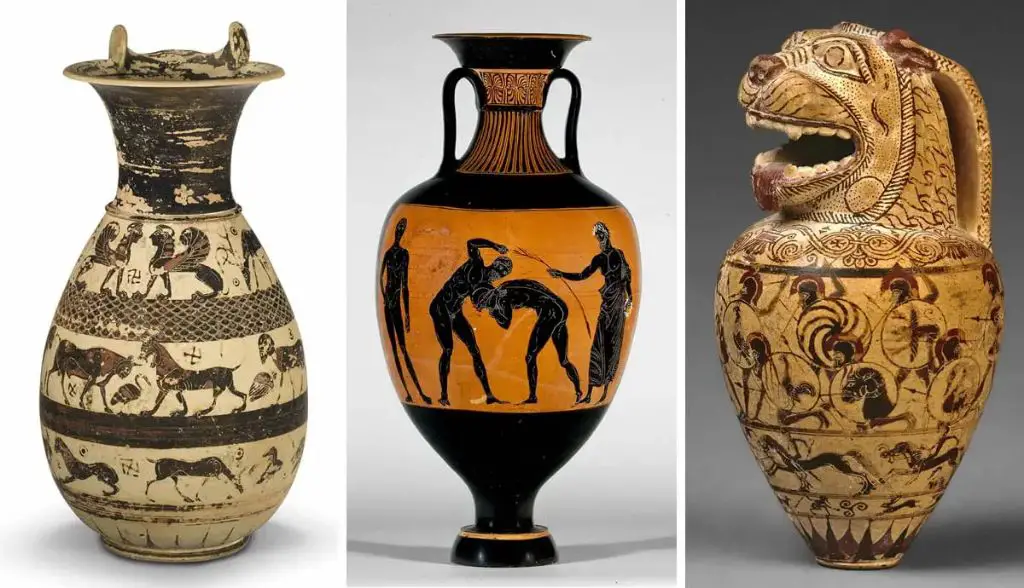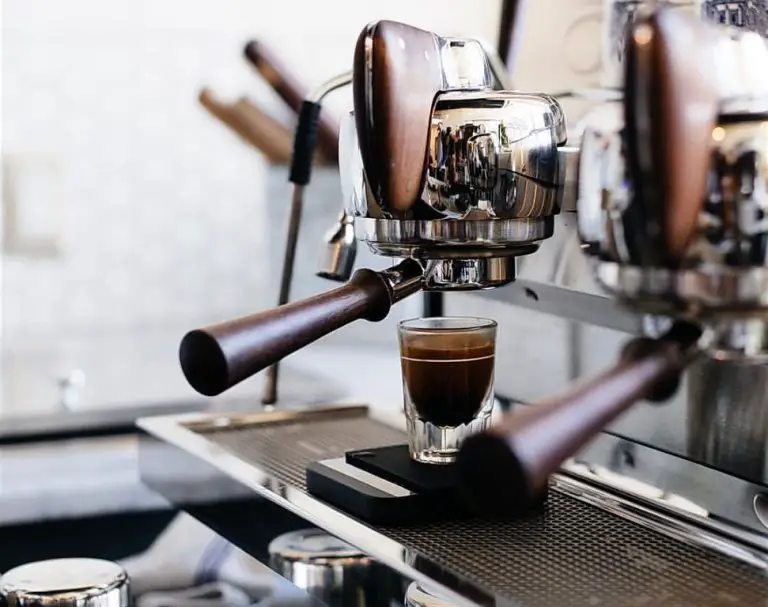What Is The Meaning Of Earthen Ware?
Earthenware is a type of ceramic made from clay and fired at lower temperatures than other ceramics. It is one of the oldest forms of pottery, dating back thousands of years. Earthenware is porous and less durable than stoneware or porcelain. However, its permeability allowed it to be used for purposes like cooking vessels and art. Earthenware played an essential role throughout history thanks to its versatility, affordability, and availability of clay.
This article will provide an overview of earthenware, including its history, manufacturing process, types, characteristics, decoration techniques, notable examples, and common uses over time. We will explore how earthenware paved the way for advancements in pottery and remains an important ceramic ware today.
Definition
Earthenware is a type of ceramic made from clay and fired at low temperatures, typically between 900-1180°C (1,650-2,150°F). The key defining characteristic of earthenware is that it is porous and not fully vitrified.
The low firing temperature allows earthenware to retain more water in the material compared to ceramics fired at higher temperatures like stoneware and porcelain. This porosity gives earthenware a more coarse texture and makes it less durable than vitrified ceramics.
Earthenware can be glazed or left unglazed. Glazes provide a waterproof coating that makes earthenware less porous. Unglazed earthenware will absorb water and can easily be scratched or stained.
Earthenware is one of the oldest types of pottery in human history, dating back thousands of years. It was widely produced across many ancient cultures because of its relatively low firing requirements. Today, earthenware maintains popularity due to its natural, rustic qualities and accessibility to hobbyists.
Key identifying features of earthenware are its coarse texture, porousness, and low firing temperature between 900-1180°C (1,650-2,150°F) compared to other types of ceramic.
History
Earthenware pottery originated in ancient times and was used to create pottery and sculptures. According to History of American Pottery and Ceramic Ware, earthenware dates back thousands of years. Ancient cultures including the Greeks, Romans, Chinese, and Mayan civilizations created earthenware pottery and ceramics.
The ancient Greeks were known for their distinctive pottery designs and earthenware sculpture. As noted in Art History: Ancient Greek Pottery Designs, Greek pottery featured black-figure and red-figure styles painted on the earthenware clay. Terracotta figurines were also a common form of Greek earthenware sculpture.

Across ancient civilizations, earthenware provided an accessible and versatile material for crafting pottery vessels, containers, figurines, and other ceramic wares. The history of earthenware pottery spans thousands of years as both a functional and decorative artform.
Manufacturing Process
Earthenware goes through a multi-step manufacturing process to turn clay into finished pottery. Here are the main steps:
Clay Preparation – The clay is dug from the ground and then refined to remove impurities like rocks or organic material. It is then mixed with water to achieve the desired consistency. Plasticizers can be added to make the clay more malleable.
Molding/Shaping – The prepared clay can be shaped using different techniques like throwing on a potter’s wheel, pouring into molds, or hand building. Pieces like handles or decorations can be added once the main form is made.
Drying – The shaped clay must dry slowly and evenly to avoid cracking and warping. It is left to air dry or sometimes placed in a controlled low temperature oven.
Low Temperature Firing – After drying, the clay is fired in a kiln at a low temperature between 1000°F to 1200°F. This hardens the clay into finished earthenware pottery. The low firing temperature allows earthenware to be porous and permeable to water. https://www.homestratosphere.com/earthenware-what-is-it-how-is-it-made/
Types
Some of the main types of earthenware include:
Terracotta
Terracotta earthenware is one of the most common types. It is made from clay and fired at low temperatures, giving it a distinct orange-red color. Terracotta has been used for centuries to make pottery, sculptures, and architectural decorations due to its durability and reddish hue. Famous examples include Terracotta Army statues from ancient China.
Source: https://en.wikipedia.org/wiki/Earthenware
Stoneware
Stoneware is a strong, vitrified type of earthenware fired at higher temperatures than typical earthenware clays. This makes stoneware less porous and more durable than other earthenware. It has excellent thermal properties and resists thermal shock. Stoneware glazes also melt at higher temperatures, resulting in a non-porous surface. Common examples include jugs, crocks, and decorative pottery.
Porcelain
Porcelain is a ceramic material made from kaolin clay fired at very high temperatures up to 1400°C. It is highly vitrified, non-porous, and translucent. Porcelain is known for its strength, hardness, whiteness, translucency and resonance. It was originally made in China and became popular in Europe in the 18th century. Porcelain is used to create fine pottery, tableware, sculptures and other decorative items.
Majolica
Majolica refers to colorful lead-glazed earthenware produced in Italy during the Renaissance. It features brightly colored imagery on a white background glaze. Majolica achieves its distinctive look by applying the lead glaze over a fired terra cotta body, rather than directly to raw clay. The lead glaze cracks as it vitrifies, allowing the underlying terra cotta to show through the cracks. Majolica was widely produced as both artistic works and functional pottery.
Characteristics
Earthenware has some key characteristics that distinguish it from other types of pottery:
Porous – Earthenware is quite porous, which means it readily absorbs water. This porosity is due to the nature of the clay used and the lower firing temperatures. Items made from earthenware cannot hold liquids and are unsuitable for foods unless glazed.
Opaque – Earthenware has an opaque, non-glasslike character. It does not become vitrified or transparent, even when fired at high temperatures.
Rough texture – The clay has a coarse, rough feel and texture to it. Earthenware lacks the smooth surfaces of stoneware and porcelain.
Fragile – Due to the porousness and low firing temperature, earthenware has a fragile nature and needs to be fired carefully. It can chip, crack or break easily compared to denser pottery.
These unique characteristics of earthenware have made it suitable for making figures, tiles, architectural decorations and utilitarian vessels for centuries. The coarse texture and absorbency lend an organic, natural quality to earthenware pieces.
Decoration
Earthenware can be decorated in a variety of ways to add color, texture, and design. The most common decoration techniques involve applying glazes, slips, paints, and relief.
Glazes are glass-like coatings that are applied to the surface of fired clay. Glazes come in various colors and effects like glossy, matte, crackled, metallic, and more. Glazes fuse to the clay body during firing, creating a glassy surface. Historical earthenware was often decorated with lead glazes.
According to the Library of Congress, earthenware produced in Modra, Slovakia in the early 1900s was hand-decorated with vibrant glazes in the factories there (Decorating earthenware in one of the many ceramic factories in Modra, Slovakia, Czechoslovakia).
Slips are fluid clay suspensions applied to the piece before firing. Slips come in various colors and provide background decoration and texture. Terra sigillata is a refined slip made from very fine clay particles used to create smooth, shiny surfaces.
Paints can be applied to either dried unfired clay or fired glazed ceramics. Paints may contain mineral pigments, metallic oxides, clays, and binders. Specialty ceramic paints are used to decorate earthenware.
Relief decoration adds 3D texture and design. Clay can be etched, stamped, stenciled, carved, or sculpted before firing to create relief decoration. Slip trailing involves trailing slip from a nozzle to create raised detailing. Sgraffito involves scratching through a colored slip to reveal the clay color underneath.
Uses
Earthenware has been used for a wide variety of purposes throughout history. Some of the most common uses include:
Tableware – Earthenware is well-suited for plates, bowls, cups, and other dinnerware due to its durability and ability to withstand repeated use and washing. Some of the earliest examples of pottery were earthenware vessels used for serving food and drink. Earthenware tableware remains popular today for its rustic, traditional aesthetic.
Art – The malleability of earthenware clay makes it an ideal material for sculptures, figurines, tiles, and decorative objects. Many cultures have used earthenware to create ornate works of art, from ancient Greek terracotta figurines to the blue and white porcelain of the Ming Dynasty. Earthenware allows artists to shape intricate and expressive designs.
Architectural Decor – Across many historical periods and cultures, earthenware has been used to decorate buildings and structures. For example, elaborate earthenware tiles often adorn the exteriors and interiors of medieval mosques. Terracotta friezes and reliefs were used in ancient Greek temples. Earthenware brings color, texture, and ornamentation to architecture.
Plant Pots – The porous, breathable nature of earthenware makes it useful for plant pots and containers. Unglazed terra cotta has been the material of choice for flowerpots for centuries. Earthenware provides proper drainage and air circulation for healthy plant growth. As a material, it is affordable and available.
Notable Examples
Some of the most notable examples of earthenware come from Chinese pottery, Greek figurines, and Delia ceramics.
Chinese pottery has a long and rich history dating back over 10,000 years. Some of the most famous examples include Tang dynasty tomb figurines, Ming dynasty Swatow ware, and Qing dynasty famille rose porcelain. Intricate designs and vivid colors characterize many traditional Chinese ceramics made from porcelain clays.
Ancient Greek artisans were masters of ceramics and created detailed terracotta figurines and vases using regional clays. The famous Tanagra figurines were made around 300 BCE and depict draped female figures. Greek vase painting flourished from 600-200 BCE with black and red figure pottery showcasing Greek mythology tales and daily life scenes.
Delia ceramics from the Mediterranean island of Rhodes date back over 4,000 years. The brightly painted platters, vessels, and figurines often feature geometric patterns, people, animals, and floral motifs. Delia wares were widely traded during ancient times across the region.
Conclusion
In summary, earthenware is one of the oldest and most ubiquitous forms of pottery. It is made from clay and other materials fired at relatively low temperatures, making it porous and less durable than other ceramic wares. Earthenware was one of the earliest uses of pottery by humans, dating back over 20,000 years. It has served a variety of purposes throughout history including cooking, storage, and religious rituals. Key characteristics include its coarse texture, opaque appearance, and water absorption.
Earthenware remains an important archaeological resource today, providing insights into the lifestyles and cultures of ancient civilizations around the world. The development and spread of earthenware pottery enabled innovations in food preparation, storage, and transport. Earthenware continues to be used in modern times for flower pots, architectural tiles, tableware and folk art due to its versatility, affordability, and rustic aesthetic. Overall, earthenware has had a significant impact on human civilization and retains an enduring appeal due to its earthy, organic qualities.





